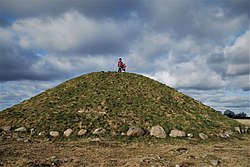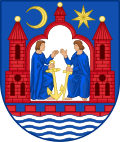Borum | |
|---|---|
Town | |
 Borum church | |
 Location of Borum in Aarhus Municipality | |
| Country | Kingdom of Denmark |
| Regions of Denmark | Central Denmark Region |
| Municipality | Aarhus Municipality |
| Parish | Borum Sogn |
| Population (2025) | |
• Total | 314 |
| Postal code | 8471 Sabro |
Borum is a village in Aarhus Municipality, Central Denmark Region in Denmark. Borum is situated 2.5 kilometres south of Sabro and 3 kilometres west of the Aarhus suburb of Tilst and has a population of 314 (1 January 2025). [1] About 2 kilometres west of Borum is the village of Herskind.
Contents
The village has an active community centered on the village hall, with amateur theatre, film club, choir, cooking, gymnastics, markets, etc. Just south of Borum is the stream of Lyngbygård Å. The stream feeds Årslev Engsø and the Aarhus River and part of the river valley has recently been environmentally restored and reconstructed, with nature paths and trails. [2]



